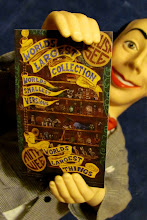
From the book jacket flap:
Roadside America examines the impact of the automobile on American culture and the environment since the turn of the century. It chronicles the profound and irrevocable changes in buildings, institutions, behavior, and everyday life that the automobile has brought to rural regions, small towns, and cities. It helps provide the historical context preservationists need to evaluate and to preserve edifices still in existence but endangered by proposed developments or lack of upkeep.
The 18 heavily illustrated essays were selected from the 1988 Society for Commercial Archeology conference,"Americans and the Automobile," held in Dearborn, Michigan. They cover early automobile design and the birth of automotive manufacturing and, through it, the beginnings of corporate industry and advertising. They demonstrate the influence of the car on everything from family snashots to fiction and music. One maps America's legendary Route 66.
Roadside America will appeal to architects; art and architectural historians; social, historic, and landscape preservationists; and automobile enthusiasts as well as to anyone interested in vernacular architecture or the influence of the auto on everyday life.

